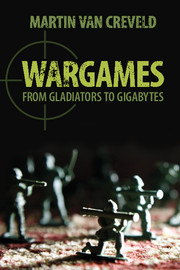Book contents
- Frontmatter
- Contents
- Acknowledgments
- Introduction
- 1 On animals and men
- 2 Games and gladiators
- 3 Trials by combat, tournaments, and duels
- 4 Battles, campaigns, wars, and politics
- 5 From bloody games to bloodless wars
- 6 Enter the computer
- 7 The females of the species
- 8 Conclusions: The mirrors and the mirrored
- Index
- References
1 - On animals and men
Published online by Cambridge University Press: 05 April 2013
- Frontmatter
- Contents
- Acknowledgments
- Introduction
- 1 On animals and men
- 2 Games and gladiators
- 3 Trials by combat, tournaments, and duels
- 4 Battles, campaigns, wars, and politics
- 5 From bloody games to bloodless wars
- 6 Enter the computer
- 7 The females of the species
- 8 Conclusions: The mirrors and the mirrored
- Index
- References
Summary
Hunting, combat sports, and contact sports
To begin at the beginning, both humans and many species of animals hunt. In so far as hunting is a question of using violence to catch, overcome, and kill a living creature, unquestionably it has certain things in common with warfare. Unless the animals are driven to be killed, physical effort and/or skill play an important role. So does chance in the form of a sudden gust of wind that may carry the hunter’s scent, or, in the days of edged weapons, deflect his arrow from its intended target. Hunting also involves strategy, although it differs from the kind commonly used in war. Not many animals will stand and fight the hunter just as he fights them, and almost none will do so unless it is cornered first. Even if it is, normally precautions are taken to ensure that the killing is one-sided. That is why, in English, hunting is also known as the “chase,” from the French chasse, “pursuit.” Semantically it is closely associated with its opposite, to flee; the same is true of its German and Dutch equivalents, Jagd and jacht.
Other similarities between hunting and war, specifically including the willingness to shed blood and the outdoor life that both require, do not have to be explained in any great detail. Plato at one point claimed that war was simply a different form of hunting, which was not meant exactly as a compliment to soldiers. Xenophon and Machiavelli, both of whom had commanded men in war, saw things in a different light. To them it was a useful form of military training. Pigsticking and other forms of big-game hunting continued to be advertised as such down to the last years of the nineteenth century. Warriors of all periods have often hunted during their leisure hours. For example, the Roman Emperor Hadrian is said to have incurred a scar when hunting, causing him to grow a beard and ending a centuries-old tradition when Romans had shaved. During the Middle Ages, and indeed for centuries after they had ended, hunting was the warrior’s sport par excellence; before he was killed at the ripe old age of twenty-six, World War I flying ace Manfred von Richthofen spent his leave hunting.
- Type
- Chapter
- Information
- WargamesFrom Gladiators to Gigabytes, pp. 9 - 53Publisher: Cambridge University PressPrint publication year: 2013



